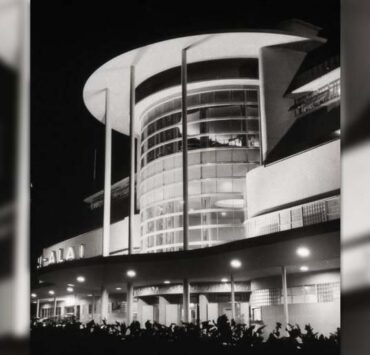Vito Selma flourishes from maker to mentor
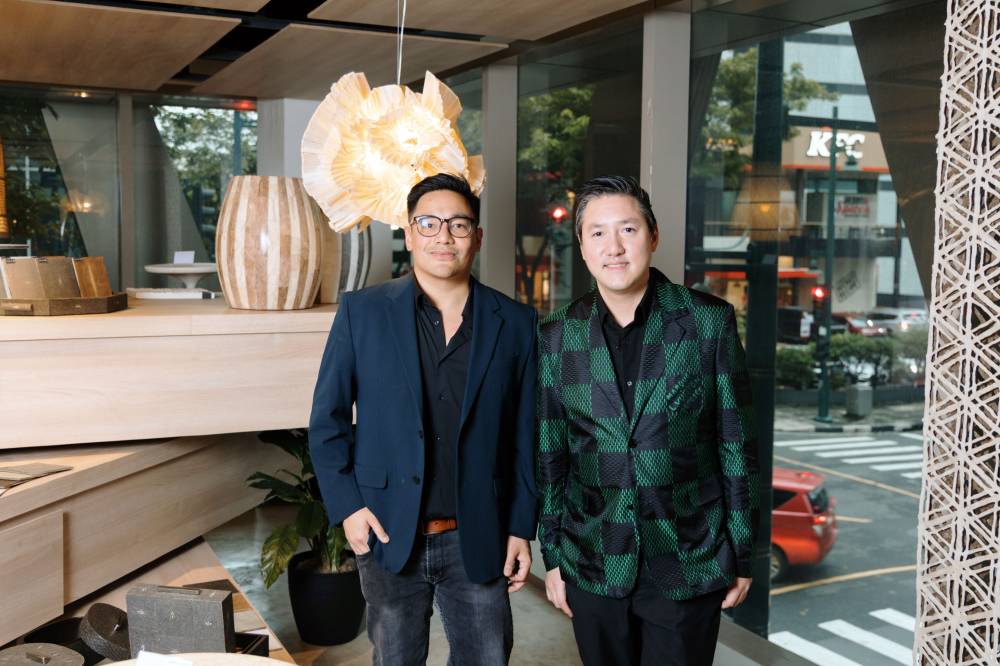
At the turn of the millennium, 18-year-old Cebuano creative Vito Selma joined the mentorship program of Movement 8, a group of Filipino designer-manufacturers showcasing Tropical Moderne to the world.
Under the guidance of Cebu-based luminaries such as Kenneth Cobonpue, Debbie Palao, and Luisa Robinson, Selma learned a fundamental truth: Design begins with a deep understanding of materials–their potential and their limitations. This philosophy deeply influenced Selma’s creative approach, utilizing both abundant resources and discarded materials in his creations.
Today, Selma, a second-generation furniture manufacturer, has built a strong foreign market and a portfolio of high-end residential and hospitality projects. This year, he is strengthening his presence with an upcoming showroom in Makati and by recently launching a design resources library and services center in Bonifacio Global City.
Archipelago Design Ventures Inc., is a new materials library and design consultancy located at Clipp Center, BGC. For this project, Selma, the creative director, teamed up with businessman Emerson Lee. Inspired by design centers in Italy and the Thailand Creative & Design Center, Archipelago aims to fill a gap in the Philippine design landscape by providing architects, designers, and students access to a curated selection of materials.
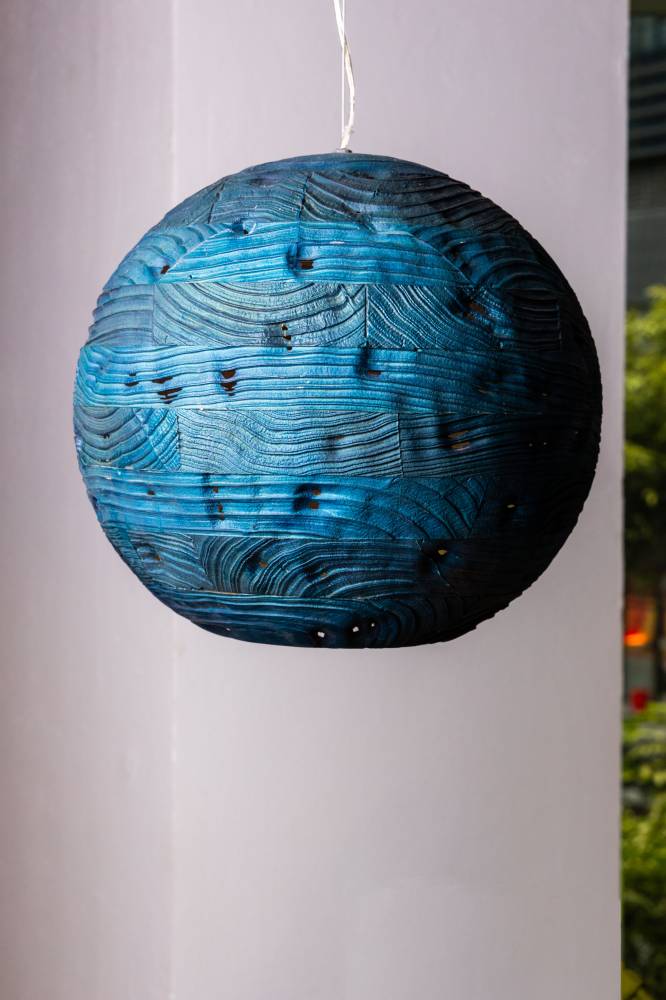
Filipino identity
Selma, who grew up in the furniture industry, recognized the lack of resource centers in the Philippines, unlike in such design hubs as Bangkok and Milan. Archipelago’s materials library serves as a resource in the ever-evolving world of materials, showcasing innovations and promoting sustainable and cutting-edge options. The design team helps clients navigate the world of materials by considering factors such as required performance, desired characteristics, and even the emotional and sensory impact of each option.
Nine years ago, Archipelago emerged in Cebu, and established a Manila office to develop materials and furniture for discerning clientele. Selma says when clients presented challenges such as crafting a chair from rice husk or experimenting with metal and rattan, they embraced them with enthusiasm.
The name Archipelago aptly reflects the company’s commitment to a Filipino identity. All designs are conceived, developed, and manufactured within the Philippines, with distribution spanning the archipelago and extending to international markets including the United States, Australia, France, and Italy.
While focused on local production, Archipelago has strategically expanded its offerings to include materials that are not available here such as processed bamboo by AmoArte, a Thai eco-luxe label, ensuring access to a wider range of high-quality products.
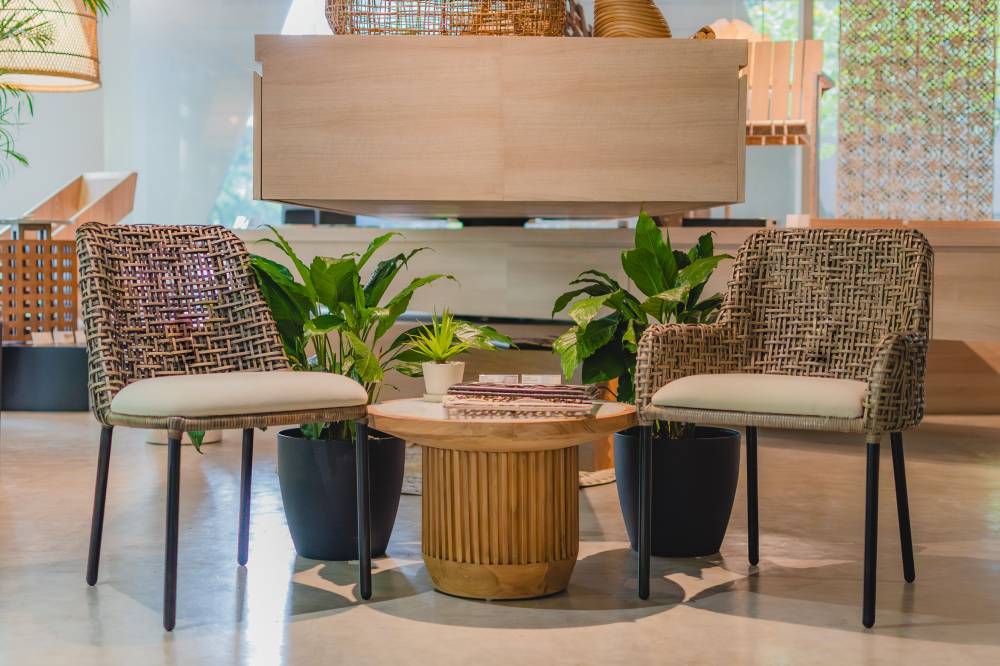
Nature’s discards
The showroom itself reflects Selma’s design philosophy, deeply rooted in the natural world. Drawing inspiration from the shapes and textures found in the earth, sky, and sea, the creations seamlessly blend form and function, creating products that are aesthetically pleasing and environmentally conscious.
Carlo Calma Consultancy Inc. designed Archipelago’s interior, which showcases a unique floating display rack for home accessories and surface treatment materials. The top shelf elegantly displays objects crafted from special materials. The rack conceals drawers that fan out to reveal a selection of variations when chosen.
At Archipelago, discarded materials are transformed into design elements. Rice husks and coffee granules, when combined with other materials, yield intriguing textures and patterns. Crushed garlic creates unique patterns on tabletops, while dried garlic peels are transformed into unexpected lampshades. Similarly, dried fish scales find new life as lampshades, trays, and other home accessories. Even sawdust is repurposed into ashtrays.
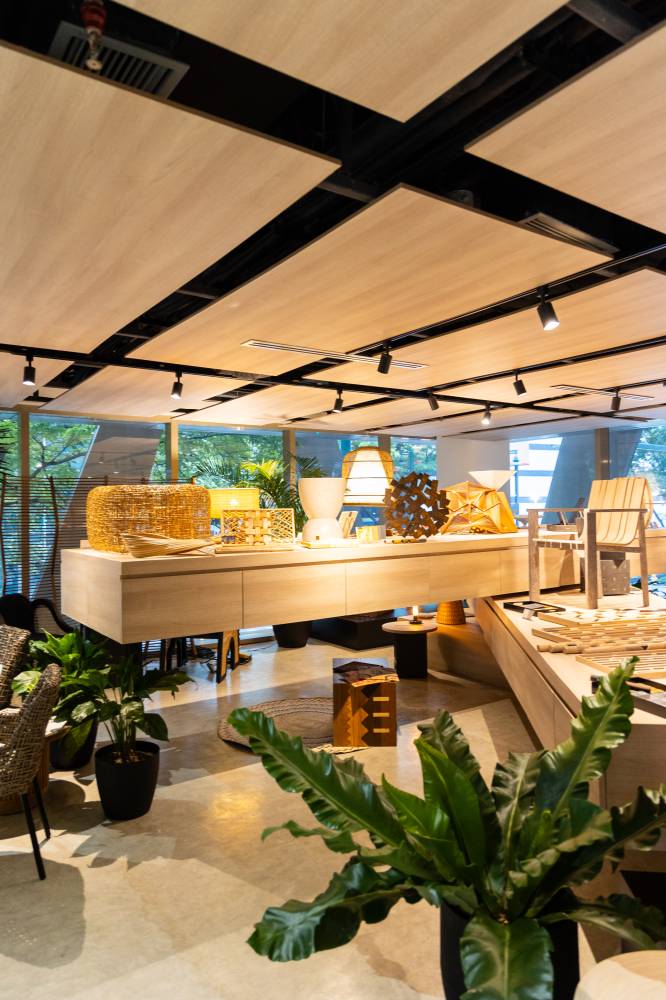
Wood, a core material for Archipelago, is explored, pushing the boundaries of design while maintaining a deep connection to nature. The lighter sapwood and darker heartwood of pine are skillfully utilized to create unique shades, surface finishes, and elegant headboards. Crushed stones are transformed into striking table footings and columns, accent walls, and intricately designed nesting tables.
The 270-square-meter showroom is thoughtfully divided into areas showcasing specific materials, such as acrylic, garlic, and metal.
Selma’s signature “Geo” collection exemplifies his innovative approach to wood. Drawing inspiration from string art, where lines connect points to form geometric patterns, the Geo screen translates this concept into a three-dimensional form. This sculptural divider is displayed alongside solihiya chairs, designed by Carlo Calma, whose frame is inspired by the majestic forms of mountains.
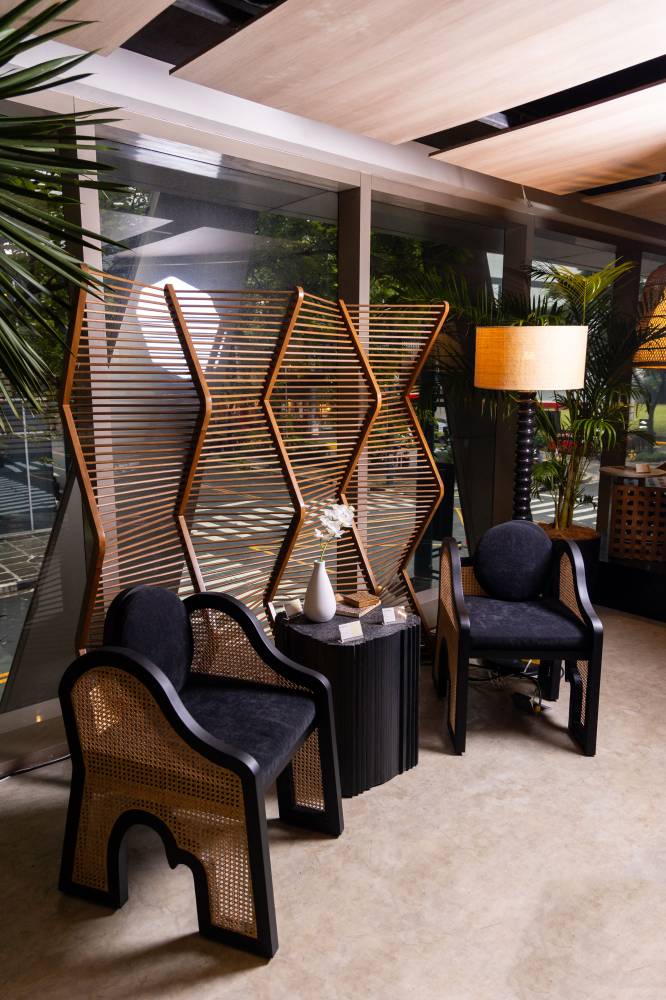
Splash Lounge Chair
Likewise, Archipelago celebrates the work of Selma’s mentees and foreign collaborators. In the acrylic section, Chinese designer Gordon Gu’s Splash Lounge Chair, inspired by the fleeting moment of water splashing, captures the relationship between existence and time. These chairs are sculpted from engineered acrylic and embody organic, flowing shapes.
Architect AJ Verga, a product of Selma’s mentorship, has contributed a unique dog bed crafted from a blend of old ship ropes and synthetic weaving, alongside a striking tapestry woven from garlic peels. Clent Yanola skillfully processed the garlic peels for this piece.
The company also offers complimentary furniture layout and decoration services, including the creation of mood boards. Moreover, Archipelago uses its extensive network of suppliers such as curtain makers and rug specialists, simplifying the sourcing process for clients.
When bidding for design projects, Archipelago takes a distinct approach. Selma says the company prioritizes the client’s budget and works closely with their chosen designers to achieve their vision within those parameters. This approach emphasizes convenience and streamlines the entire design process.
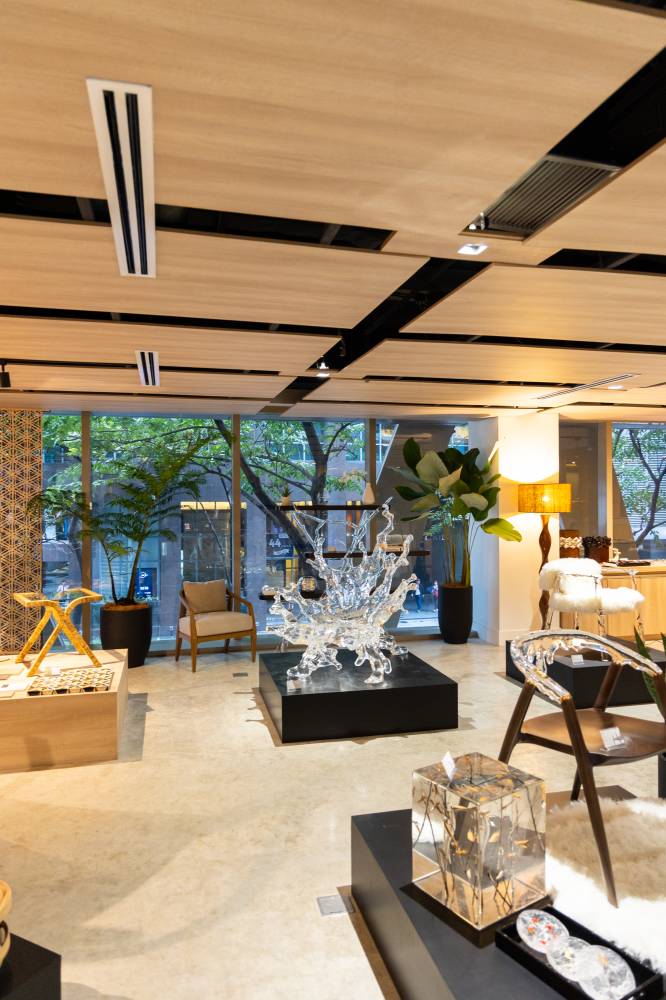
Ella the robot
An attraction within the showroom, Ella is a robot coffee machine. Selma and Lee have partnered with a Singaporean principal to bring this technology here. “The challenge,” explains Selma, “was to adapt a Singaporean brand to the Filipino context.”
To infuse warmth into this robot, he incorporated a deconstructed solihiya pattern into the booth’s graphic design. He adds that Ella offers a high degree of customization, allowing clients to choose from a range of colors and materials.
This summer, Selma will unveil his furniture showroom in old Makati. It will feature his eponymous high-end brand alongside Casa Selma, a bridge collection created during the pandemic to support local communities. “We designed Casa Selma with affordability in mind to maximize sales and maximize our impact,” he says. A significant portion of the sales proceeds directly benefits these communities.
Casa Selma also collaborates with prominent personalities and creative individuals, inviting them to conceptualize unique objects for retail. The proceeds from these collaborative ventures are then donated to their chosen charities.














